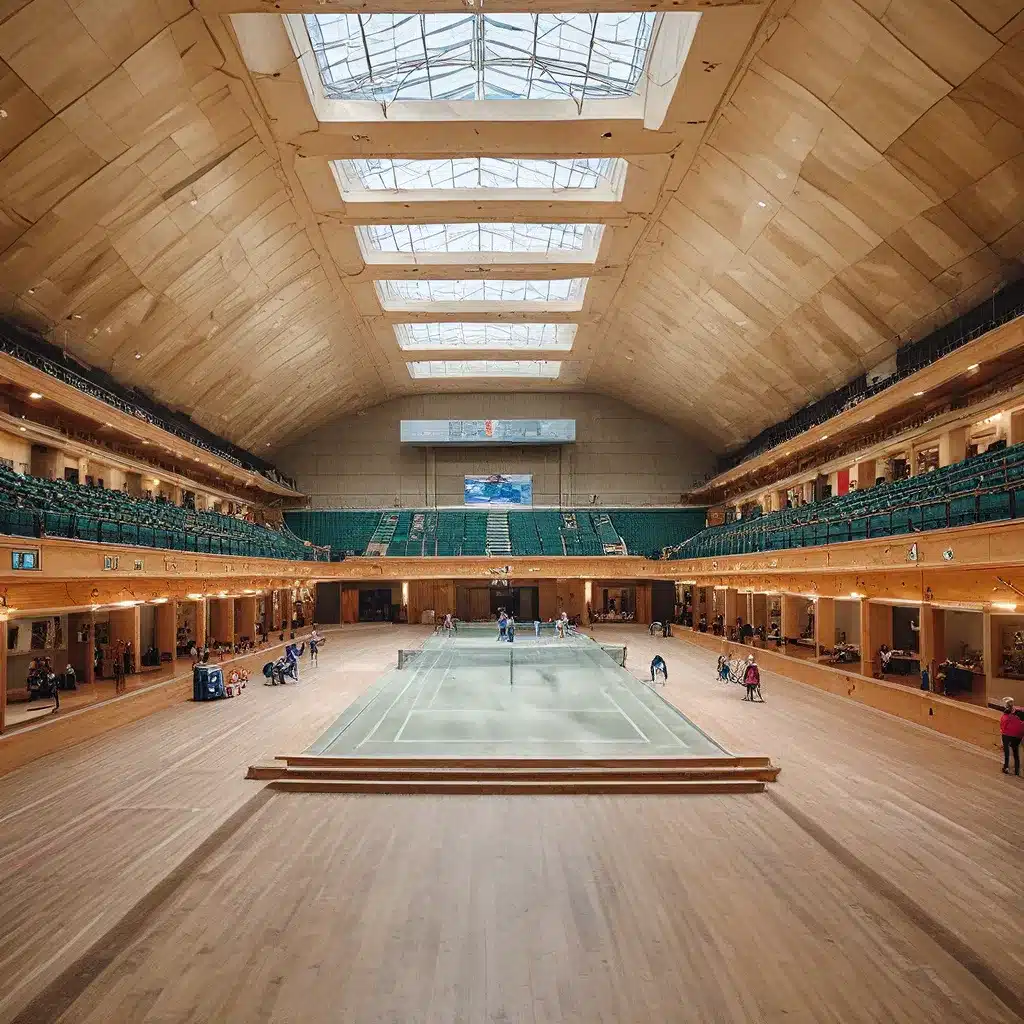
The Stunning Stadthalle Vienna: A Beacon of Modernist Design
The Stadthalle Vienna, located in the heart of Austria’s capital, stands as a testament to the country’s rich architectural legacy. This iconic venue, which plays host to the prestigious Vienna Open tennis tournament, is a true marvel of modernist design, seamlessly blending functionality and aesthetic brilliance.
Constructed in 1958, the Stadthalle Vienna was designed by the renowned Austrian architect Roland Rainer, who is widely regarded as one of the pioneers of modernist architecture in the country. Rainer’s vision was to create a multifunctional space that could accommodate a wide range of events, from sports competitions to concerts and cultural performances.
The stadium’s striking geometric form, characterized by its sharp, angular lines and massive glass facades, immediately catches the eye of visitors. The use of reinforced concrete and steel in the building’s construction not only lends it a sturdy and reliable structure but also allows for the creation of vast, open spaces that are well-lit and airy.
Exploring the Stadthalle’s Architectural Marvels
One of the most remarkable features of the Stadthalle Vienna is its versatile layout, which can be easily adapted to suit the needs of different events. The main arena, known as the Wiener Stadthalle, can accommodate up to 16,000 spectators and boasts state-of-the-art facilities, including retractable roofs and adjustable seating arrangements.
The Dachfoyer, or roof foyer, is another architectural highlight of the Stadthalle. This expansive, glass-enclosed space offers breathtaking views of the city and serves as a popular gathering place for visitors before and after events. The integration of natural light through the use of large windows and skylights creates a bright and airy atmosphere that is both inviting and comfortable.
Sustainability and Innovation at the Stadthalle
In recent years, the Stadthalle Vienna has undergone several renovations and upgrades to enhance its sustainability and energy efficiency. The installation of solar panels on the roof and the implementation of advanced waste management systems are just a few examples of the venue’s commitment to environmental responsibility.
Moreover, the Stadthalle has embraced technological advancements to improve the overall experience for both spectators and event organizers. High-speed internet connectivity, state-of-the-art audio-visual equipment, and seamless ticketing and access systems are just a few of the features that have been integrated into the venue to ensure a smooth and convenient experience for all who visit.
The Stadthalle’s Role in Vienna’s Cultural Landscape
The Stadthalle Vienna is not just a sports venue; it is a cultural hub that plays a vital role in the city’s rich arts and entertainment scene. The venue hosts a wide range of events, from classical music concerts and ballet performances to comedy shows and corporate conferences.
The architectural grandeur of the Stadthalle has also made it a popular destination for tourists and locals alike, who come to marvel at its striking design and appreciate its historical significance. The venue’s iconic status has even led to its inclusion in various architectural publications and guides highlighting the best examples of modernist design in Europe.
Conclusion: A Timeless Architectural Masterpiece
The Stadthalle Vienna is a true architectural masterpiece that has stood the test of time. Its bold, modernist design, coupled with its adaptable functionality and commitment to sustainability, has made it a beloved landmark in the city of Vienna and a must-visit destination for anyone interested in the intersection of sports, culture, and architecture.
As the Old Stadium Journey website aptly demonstrates, the Stadthalle Vienna is a shining example of how innovative design and forward-thinking can create a truly remarkable and enduring sporting and cultural venue. Its legacy continues to inspire architects and design enthusiasts around the world, cementing its place as a true icon of Austrian architectural brilliance.

